Exercises
1. Choose a simple game like tic tac toe or jacks to play. Use the principles of action theory to consider your play experience.
Tic Tac Toe
Beliefs If I am the first person to start the game, then it is not possible to lose.
Reaction Think carefully before each step
Desire I want to win
Intention I need to stop the opponent’s possibility to connect three chess
Action play it
Repeat I feel confident to win
2. Choose a videogame and imagine what would happen if you changed the player point of view. If it’s top down, how would the gameplay differ if it was side-view? 2D to 3D?
Plants vs. Zombies
side-view: Players can only do blind play
2D to 3D: Enhanced gameplay, but no overall change
3. Pick a game and consider the mental model you have for how the game is played.
Dinner Dash
A possible approach is to balance the personalities of different roles to determine service priorities. In the game, the speed must be fast, the movement must be agile, and the position needs to be matched by the color of the character's dress. These actions mean exploring, playing, and making the most of all the game's features.
4. Watch people playing a challenging game. Create a log of all the moments of failure that happen. Categorize each instance of failure as either individual flaw, flaw in the game, or circumstantial flaw.
I watched someone playing a game called Getting Over It with Bennett Foddy
https://www.bilibili.com/video/BV1vt4y1D7pw?from=search&seid=3549601158465809134&spm_id_from=333.337.0.0
I think these failures are hard to judge, and the game design itself is a big obstacle to survive. I understand it as 50% individual flaw and 50% flaw in the game.
Game ideas
I had some primary thoughs and inspirations about the final game.
* Rocky Mountain treasure hunt
Forrest Fenn, 80, hid millions of dollars worth of treasure somewhere in the Rocky Mountains and later wrote an autobiography, The Thrill of the Chase, which contains clues to its location. Tens of thousands of people took part in the treasure hunt. Fenn's motivation came after a friend’s visiting. He was diagnosed with cancer at the age of 58. The friend who visited wanted to buy his art collection and Fenn refused. However, his friends suggest fenn doesn't have many days left to live so better to sell it to him. Fenn was shocked by those words that he decided to give the treasure to the person in destiny by hiding it. However, due to the obstruction of his family, he did not take action until 2010. As time went on, still no one found the treasure chest, so Fenn gave more clues, and in 2020 someone finally found the treasure chest. The final winner’s strategy: He did a lot of research on Fenn hemself which reminds me of Ready Player One.
This story is very moving. Fenn is so romantic with the things he loves. This hunting game’s aim is not only to dig the gold, but feel what is life. This is the fundamental purpose and wish from Fenn.
This poem gave me some insprirations about design and hiding clues.
* Love Letter
In the movie Love Letter, there is a plot about: when the hero was in high school, because he likes the heroine, he hid many cards with the heroine's portrait in the library books. Somewhere along the way, the students in their school began to play a game called "find the cards", which was to find the cards left by the hero. Many years later, the hero died of avalanche. In the last scene of the movie, students from the high school of the hero and heroine found the cards and gave them to the heroine.
This story inspired me to design a scavenger hunt game. Unlike the first treasure hunt, where the Rocky Mountain hunt is about wealth, this library scavenger hunt is about pure curiosity and the desire to discover the secrets behind it. There is a hidden storyline in those library card, but there is no rule or restrictions. The game itself is formed by the time and emotion.
I want to combine physical game with website design. The website is for:
As a clue to advance the story level
Interactive with people to find the next clue
as the access of game context
promotion
* Escherian Stairwell
![]()
This fake video gave a lot of inspiration about the game design. Finding the Escherian Stairwell is also a game formed by people as like “finding cards” game in Love Letter. How can people believe in some virtual stairwell? The social media gave us many chance to do this. Three man make a tiger, if everyone believe in something and there is an “evidence”, then the others naturally will not doubt. I want to put this element in my game.
Maybe I can register a instagram account and post something. Let people believe in it, and then give some extra clues to let them doubt the reality.
The story can bassed in student cards at goldsmiths. Because in this term, a huge amount of student still don’t have their student card. So we can name this game: “where is my goldsmiths student card ?” The goal of people who attennd this game can be curious and also, the student card context is related with them.
Tic Tac Toe
Beliefs If I am the first person to start the game, then it is not possible to lose.
Reaction Think carefully before each step
Desire I want to win
Intention I need to stop the opponent’s possibility to connect three chess
Action play it
Repeat I feel confident to win
2. Choose a videogame and imagine what would happen if you changed the player point of view. If it’s top down, how would the gameplay differ if it was side-view? 2D to 3D?
Plants vs. Zombies
side-view: Players can only do blind play
2D to 3D: Enhanced gameplay, but no overall change
3. Pick a game and consider the mental model you have for how the game is played.
Dinner Dash
A possible approach is to balance the personalities of different roles to determine service priorities. In the game, the speed must be fast, the movement must be agile, and the position needs to be matched by the color of the character's dress. These actions mean exploring, playing, and making the most of all the game's features.
4. Watch people playing a challenging game. Create a log of all the moments of failure that happen. Categorize each instance of failure as either individual flaw, flaw in the game, or circumstantial flaw.
I watched someone playing a game called Getting Over It with Bennett Foddy
https://www.bilibili.com/video/BV1vt4y1D7pw?from=search&seid=3549601158465809134&spm_id_from=333.337.0.0
I think these failures are hard to judge, and the game design itself is a big obstacle to survive. I understand it as 50% individual flaw and 50% flaw in the game.
Game ideas
I had some primary thoughs and inspirations about the final game.
* Rocky Mountain treasure hunt
Forrest Fenn, 80, hid millions of dollars worth of treasure somewhere in the Rocky Mountains and later wrote an autobiography, The Thrill of the Chase, which contains clues to its location. Tens of thousands of people took part in the treasure hunt. Fenn's motivation came after a friend’s visiting. He was diagnosed with cancer at the age of 58. The friend who visited wanted to buy his art collection and Fenn refused. However, his friends suggest fenn doesn't have many days left to live so better to sell it to him. Fenn was shocked by those words that he decided to give the treasure to the person in destiny by hiding it. However, due to the obstruction of his family, he did not take action until 2010. As time went on, still no one found the treasure chest, so Fenn gave more clues, and in 2020 someone finally found the treasure chest. The final winner’s strategy: He did a lot of research on Fenn hemself which reminds me of Ready Player One.
As I have gone alone in there
And with my treasures bold,
I can keep my secret where,
And hint of riches new and old.
Begin it where warm waters halt
And take it in the canyon down,
Not far, but too far to walk.
Put in below the home of Brown.
From there it's no place for the meek,
The end is ever drawing nigh;
There'll be no paddle up your creek,
Just heavy loads and water high.
If you've been wise and found the blaze,
Look quickly down, your quest to cease,
But tarry scant with marvel gaze,
Just take the chest and go in peace.
So why is it that I must go
And leave my trove for all to seek?
The answers I already know,
I've done it tired, and now I'm weak.
So hear me all and listen good,
Your effort will be worth the cold.
If you are brave and in the wood
I give you title to the gold.
This story is very moving. Fenn is so romantic with the things he loves. This hunting game’s aim is not only to dig the gold, but feel what is life. This is the fundamental purpose and wish from Fenn.
This poem gave me some insprirations about design and hiding clues.
* Love Letter
In the movie Love Letter, there is a plot about: when the hero was in high school, because he likes the heroine, he hid many cards with the heroine's portrait in the library books. Somewhere along the way, the students in their school began to play a game called "find the cards", which was to find the cards left by the hero. Many years later, the hero died of avalanche. In the last scene of the movie, students from the high school of the hero and heroine found the cards and gave them to the heroine.
This story inspired me to design a scavenger hunt game. Unlike the first treasure hunt, where the Rocky Mountain hunt is about wealth, this library scavenger hunt is about pure curiosity and the desire to discover the secrets behind it. There is a hidden storyline in those library card, but there is no rule or restrictions. The game itself is formed by the time and emotion.
I want to combine physical game with website design. The website is for:
As a clue to advance the story level
Interactive with people to find the next clue
as the access of game context
promotion
* Escherian Stairwell

This fake video gave a lot of inspiration about the game design. Finding the Escherian Stairwell is also a game formed by people as like “finding cards” game in Love Letter. How can people believe in some virtual stairwell? The social media gave us many chance to do this. Three man make a tiger, if everyone believe in something and there is an “evidence”, then the others naturally will not doubt. I want to put this element in my game.
Maybe I can register a instagram account and post something. Let people believe in it, and then give some extra clues to let them doubt the reality.
The story can bassed in student cards at goldsmiths. Because in this term, a huge amount of student still don’t have their student card. So we can name this game: “where is my goldsmiths student card ?” The goal of people who attennd this game can be curious and also, the student card context is related with them.
Step 1:
Generate a basic idea with this formula: Adjective (brilliant) + Genre (treasure hunt game) + environment (goldsmiths) + setting (physical) = the foundation of a game idea.Step 2:
- Goal: The purpose of the game (find the hidden student card)
- Space: Details about the environment and setting (eg. in University)
- Components: All the different pieces of the game (eg. players, clues, QR code, Hidden cards, website)
- Mechanics: Things you can do in your game (search and report)
- Rules: What you can and can’t do in the game ( still considering)

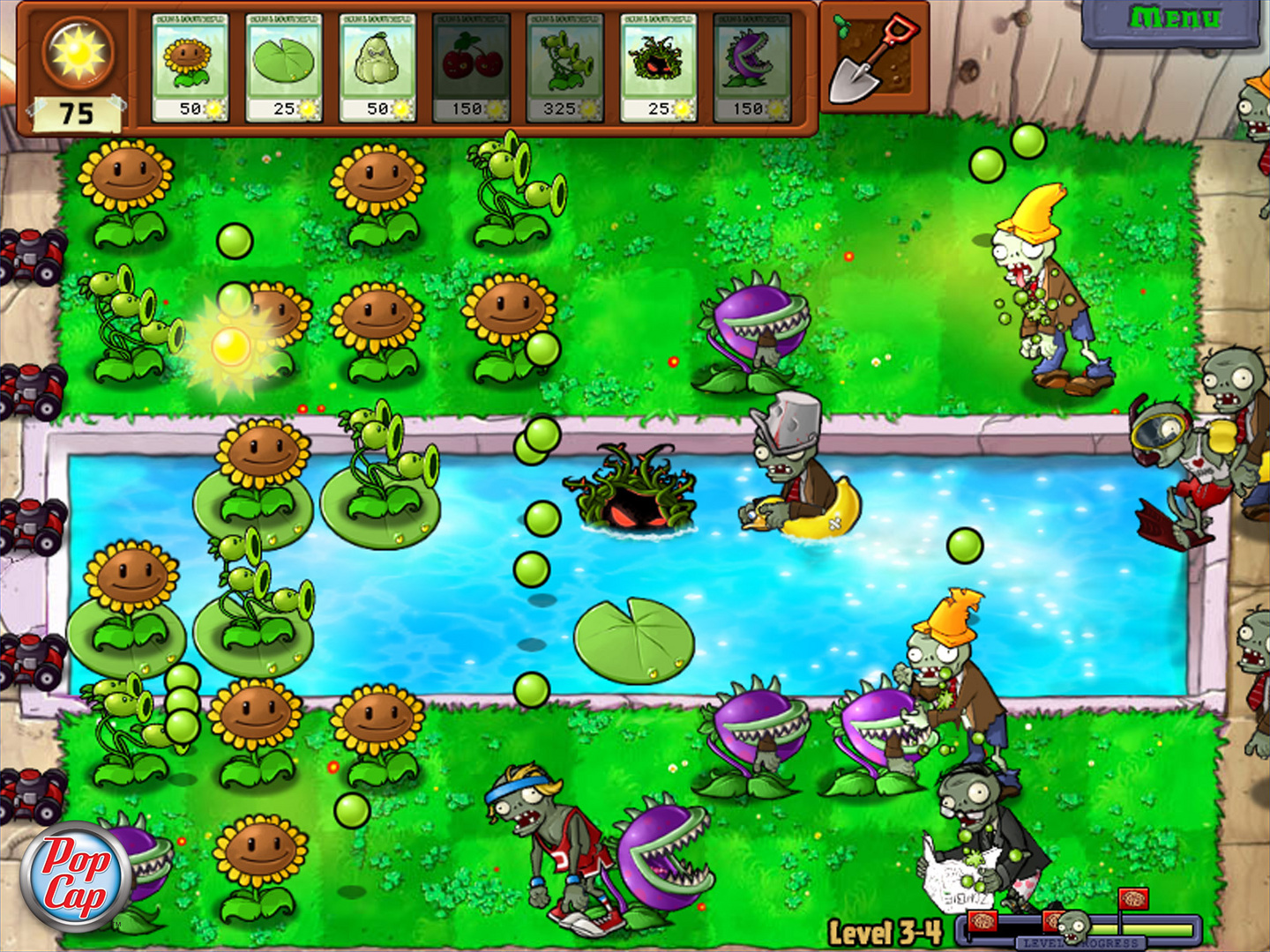

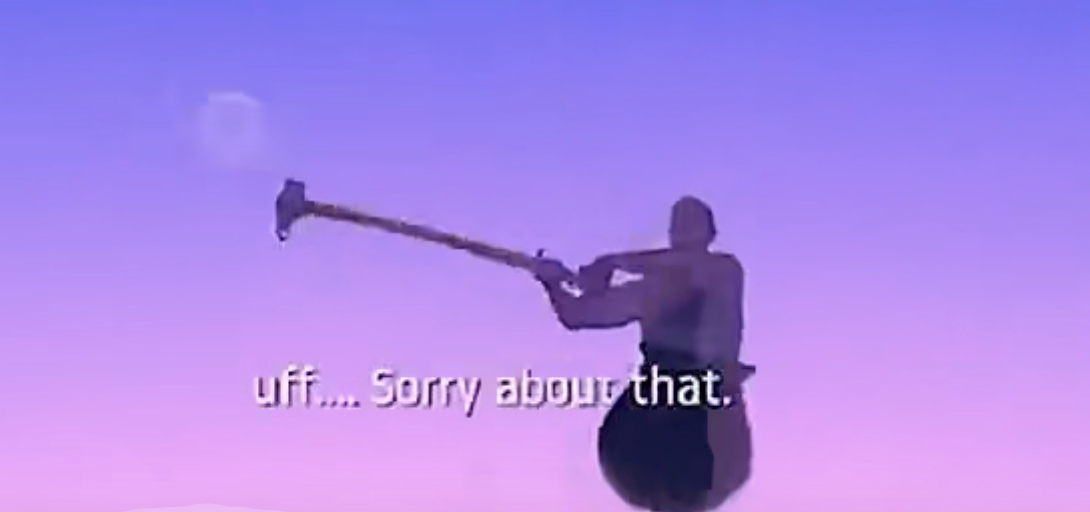
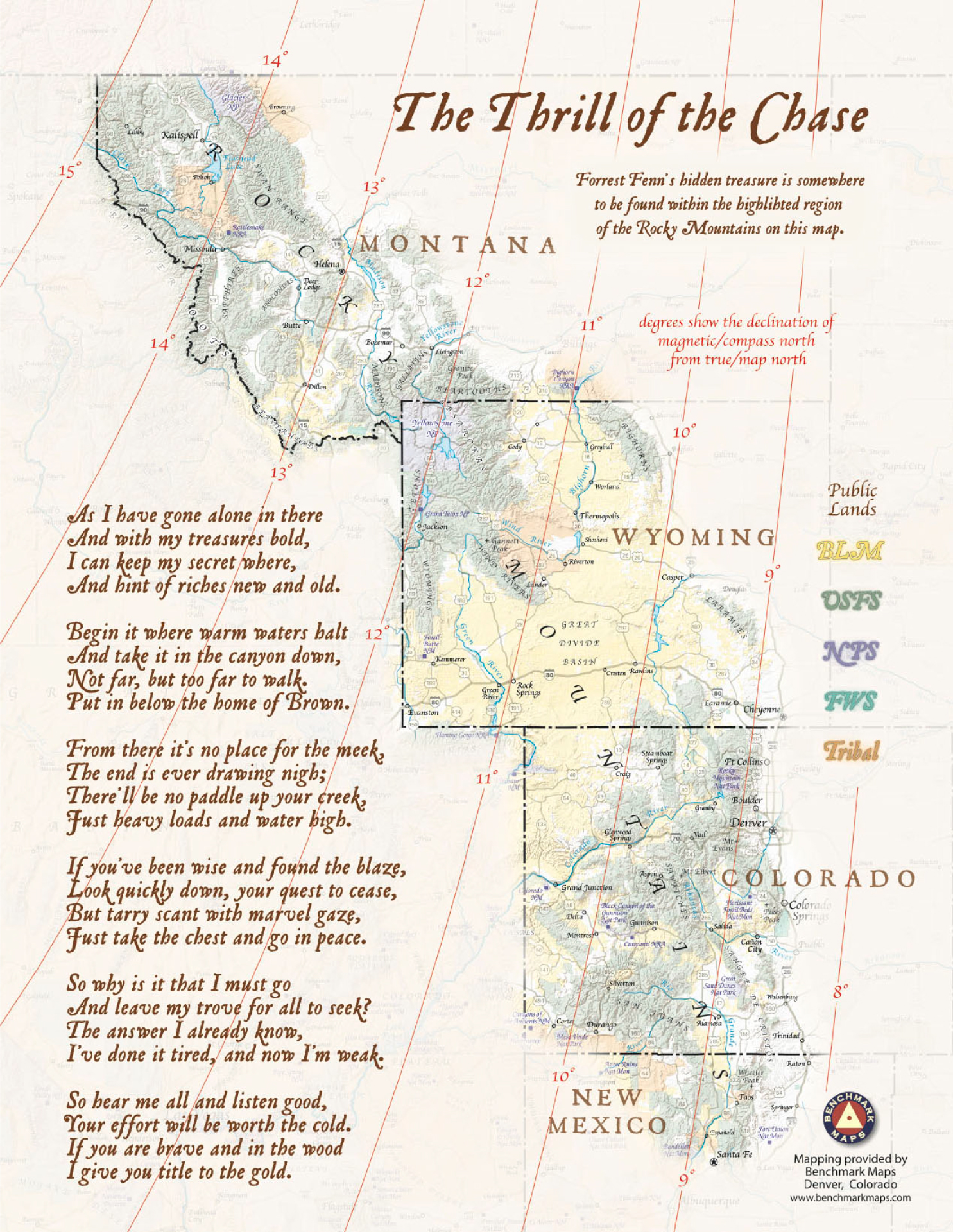


Game, Design, Play - Chapter 4,5
The Design of Everyday Things - Chapter 1,2,3
player experience: sensory, information, interaction, frame, and purpose.

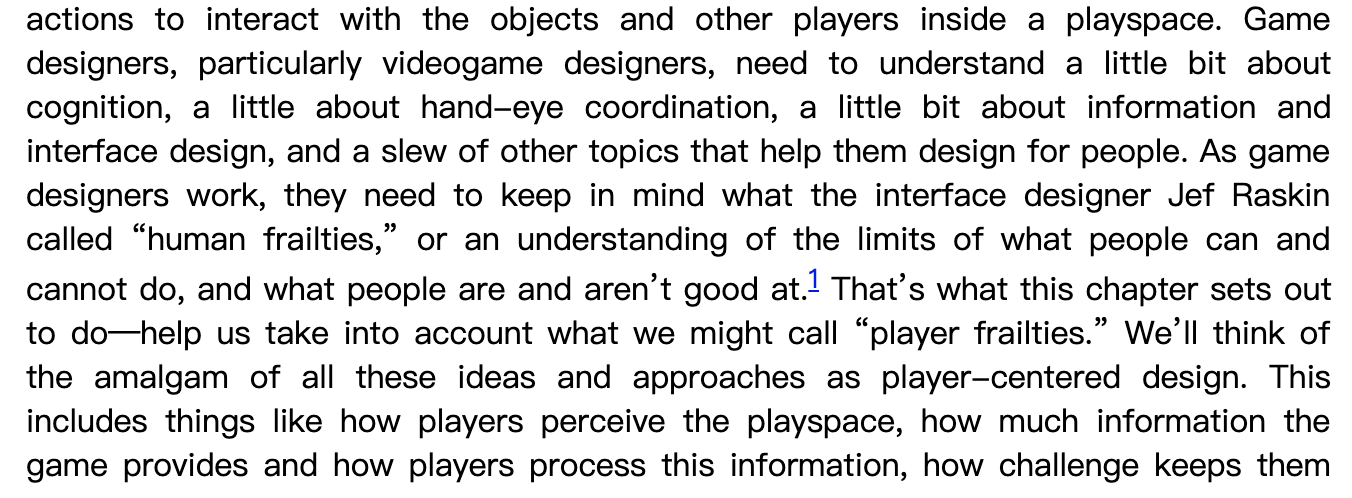






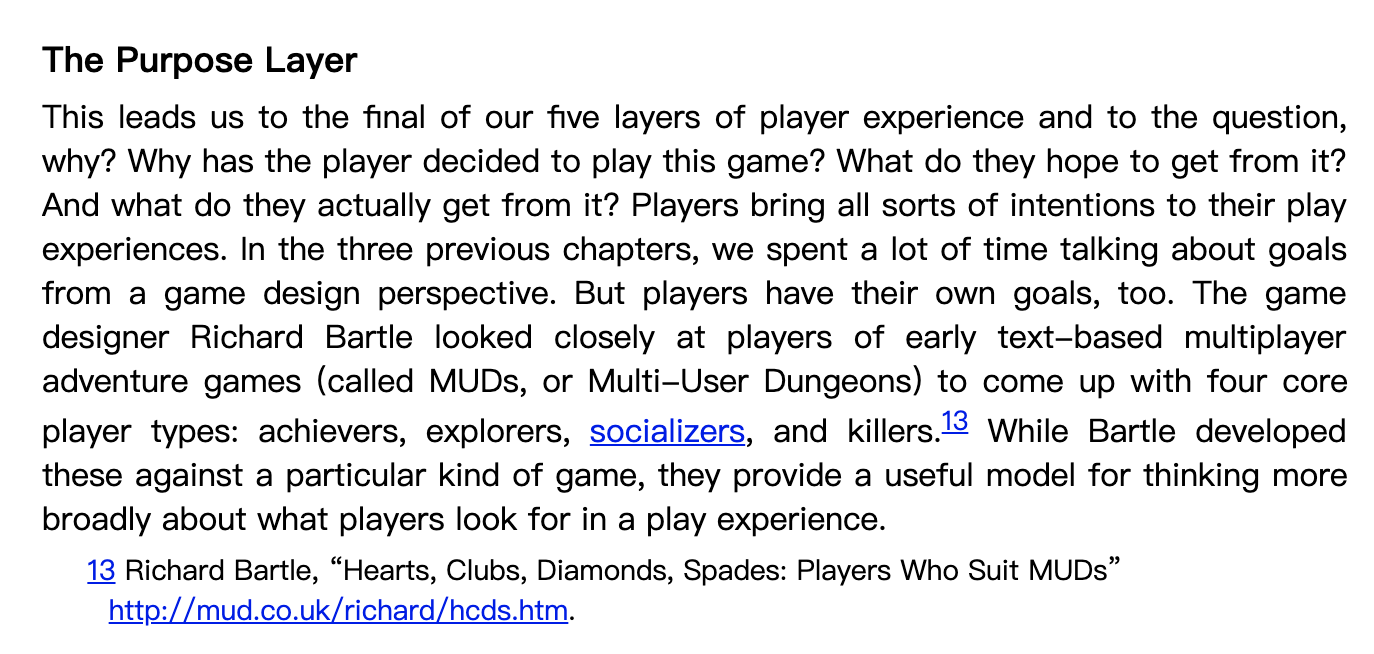
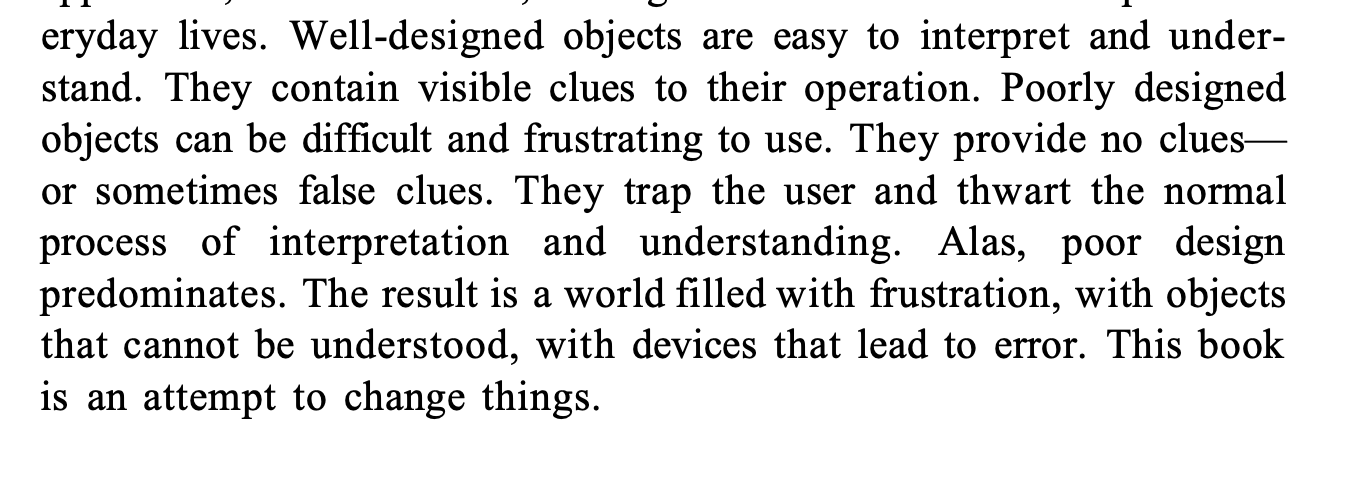
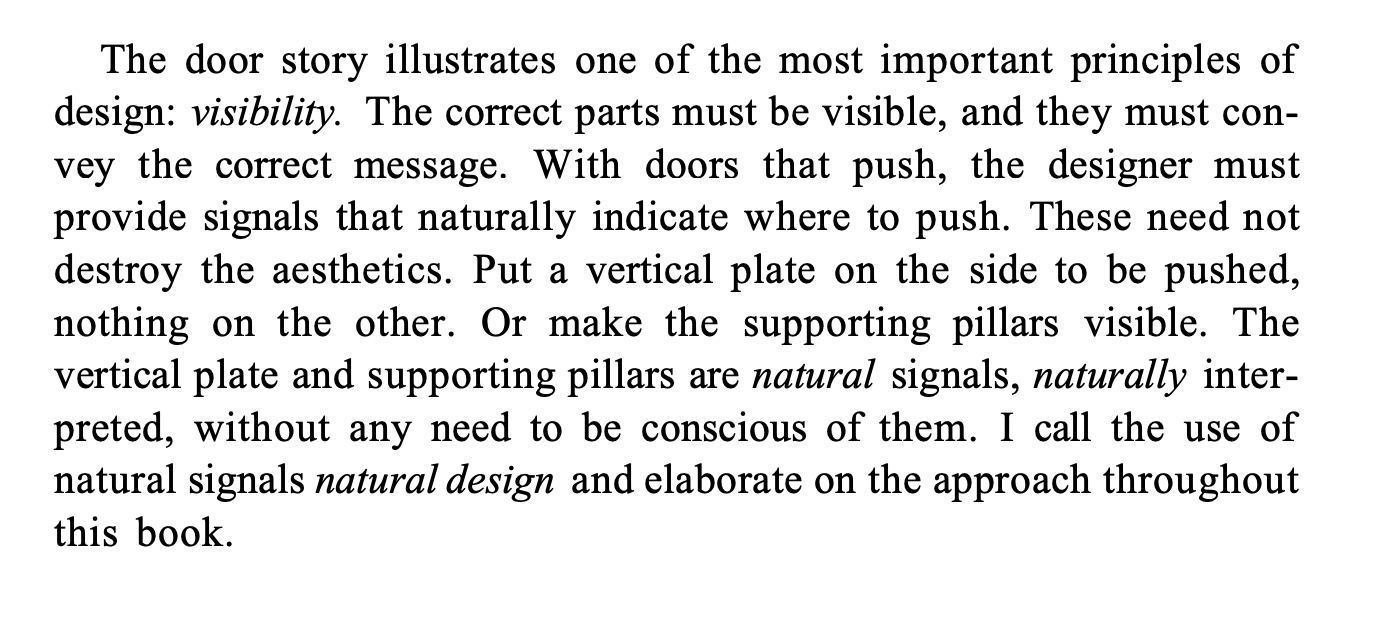






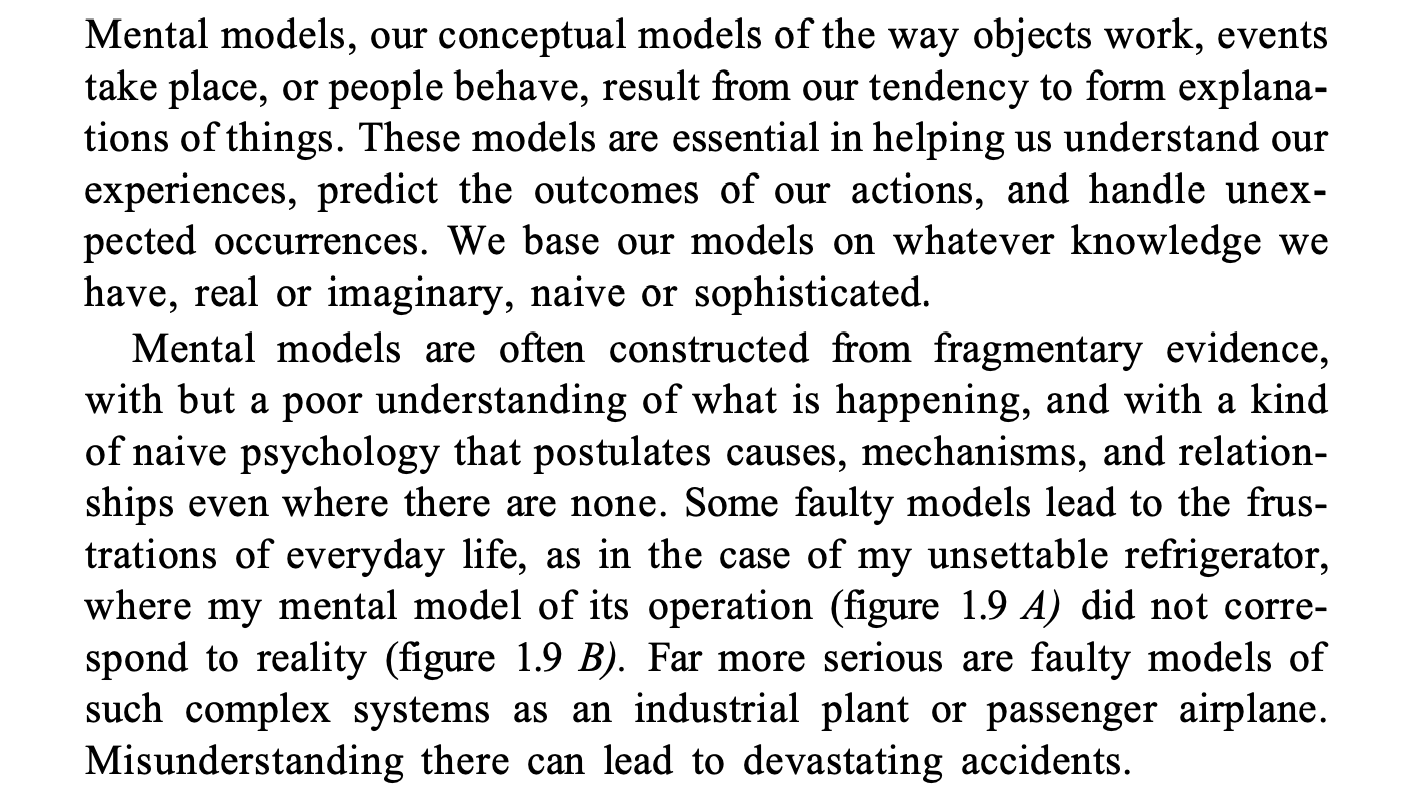
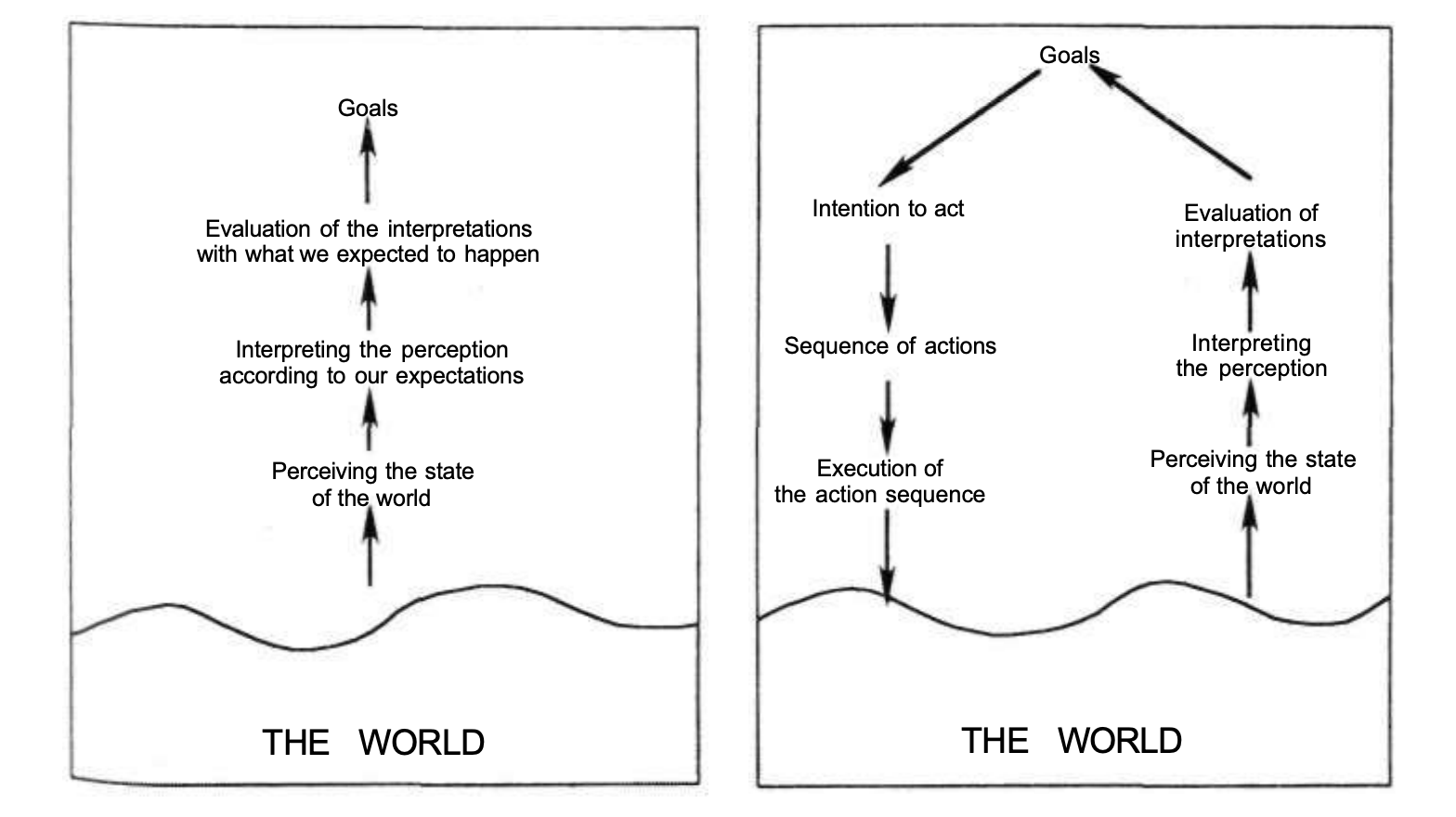
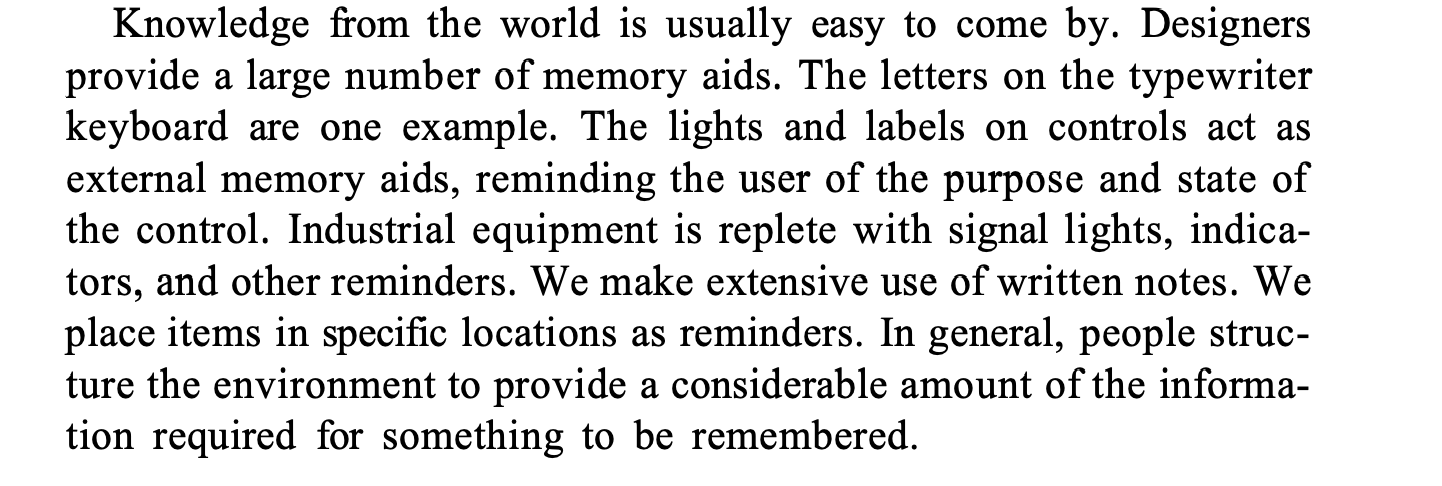
I think the best design is to let the user understand what the product does and how to use it without any words or instructions. The core design and development requirements of a product should not be piled up with complex functions and features, but should be based on user behavior analysis. To trigger a user to complete a task, it is necessary to have both: sufficient motivation, operational ability to perform the task, and trigger points. The motivation is easy to understand. For example, when doing programming assignments, novice programmers may need help checking code for bugs. But if he can find a programming expert to collaborate on the project, he won't have to. Of course there are many, such as, pleasure/pain/hope/fair/social acceptance/rejection...